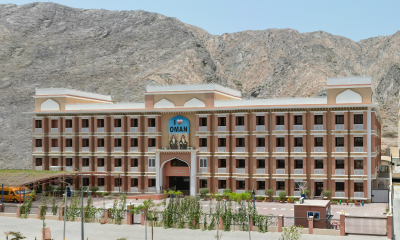Progress Oman
ADOPTING BEST PRACTICES
Oman’s banking sector comprises of seven local commercial banks, nine foreign banks, two specialised banks and two full-fledged Islamic banks together with six local commercial banks operating separate Islamic windows.

HE Hamood Sangour Al-Zadjali, Executive President,
Central Bank of Oman
Oman’s banking sector comprises of seven local commercial banks, nine foreign banks, two specialised banks and two full-fledged Islamic banks together with six local commercial banks operating separate Islamic windows. During 2014, performance of commercial banks continued to remain favourable. The financial health of banks in terms of assets quality, provision coverage, capital adequacy and profitability remained strong. The balance sheet of commercial banks further strengthened due to the robust growth in both deposits and credits. The total assets of commercial banks increased by 11.1 per cent to RO24.8bn in December 2014 from RO22.4bn at the end of 2013. Out of the total assets, credit disbursement accounted for 68.1 per cent and increased by 11.3 per cent in 2014 to RO16.9bn. Credit to the private sector and public enterprises increased by 10.9 per cent and 14 per cent, respectively. Aggregate deposits held with commercial banks registered a significant increase of 10.9 per cent to RO17.3bn in 2014 from RO15.6bn a year ago. Islamic banking entities provided finance to the extent of RO1bn at the end of December 2014 compared to RO434mn in December 2013. Total deposits held with Islamic banks and windows also registered a substantial increase to RO688.9mn by the end of 2014 from RO171.9mn a year ago.
Despite increase in the size of the balance sheets, the gross non-performing loans (NPLs) continued to remain low. The NPLs as percentage of total credit stood at 2.2 per cent in September 2014 compared to 2.1 per cent as at the end of 2013. The capital adequacy ratio stood at 15.1 per cent of risk-weighted assets in September 2014, which was higher than the minimum regulatory requirement of 12 per cent prescribed by CBO. Consistent with the accommodative monetary policy, the liquidity situation remained robust in the banking system during 2014. In respect of domestic interest rate structure of commercial banks, both deposit and lending rates softened during this period and this has helped borrowers and corporates to obtain credit at favourable interest rates.
Risk management
The Central Bank of Oman (CBO) has been proactively fine-tuning prudential and supervisory norms through development of sound risk management systems, enhancing transparency and complying with international standards and best practices in order to strengthen the banking system in the Sultanate. As financial stability has emerged as a global issue, a financial stability department has been set up within the CBO for macro-prudential supervision of the financial system, which is now producing stress testing and financial stability reports. It is comforting to note that the latest Stress Testing Report suggests that the overall banking system appears to be quite resilient to withstand various shocks. A Higher Committee on Financial Stability has been formed to monitor financial systemic risks and enable a timely response. The minimum regulatory capital for banks was raised from 10 per cent to 12 per cent of the risk-weighted assets. The CBO is well ahead in the implementation of Basel III framework. The final guidelines on Basel III were issued in November 2013. Again, the risk-based supervision framework for on-site examinations has been fully implemented since 2012. In order to strengthen the risk assessment procedures, CBO had issued guidelines to banks for the implementation of the Internal Capital Adequacy Process (ICAAP) which has been operationalised by all banks in Oman from December 31, 2012. Prompt corrective actions with revised trigger points like changes in capital adequacy requirement of banks are being emphasised further.
-

 Banking & Finance2 weeks ago
Banking & Finance2 weeks agoOman Oil Marketing Company Concludes Its Annual Health, Safety, Environment, and Quality Week, Reaffirming People and Safety as a Top Priority
-

 Economy2 months ago
Economy2 months agoMaal Card: What Oman’s New National Payment Card Means for Everyday Users
-

 News2 months ago
News2 months agoSheikh Suhail Bahwan, Chairman of Suhail Bahwan Group, Passes Away
-

 News1 month ago
News1 month agoOIG Appoints New CEO to Lead Its Next Chapter of Excellence
-

 Economy2 months ago
Economy2 months agoOman Unveils Official Omani Rial Symbol in Landmark Move to Boost Global Currency Presence
-

 News1 month ago
News1 month agoReport: How India & The Middle East Are Exploiting Immense Economic Synergies
-

 Uncategorized1 month ago
Uncategorized1 month agoOman’s ISWK Cambridge Learners Achieve ‘Top in the World’ and National Honours in June 2025 Cambridge Series
-

 Trade1 month ago
Trade1 month agoConsulate Office of the Republic of South Africa opens in Muscat, enhancing bilateral relations




























You must be logged in to post a comment Login